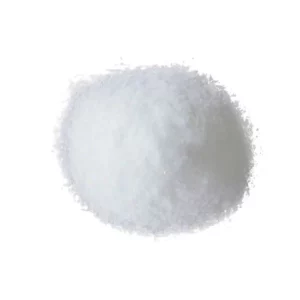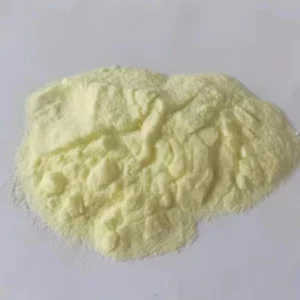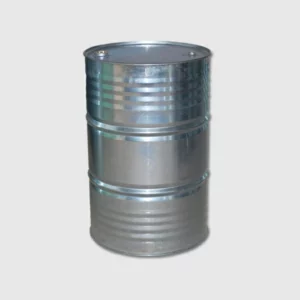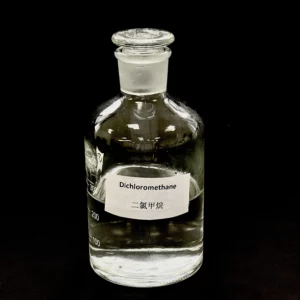In the realm of organic chemistry, 2-methoxy-2-methylpropane, also known by its common name tert-butyl methyl ether (TBME), is a versatile and widely used compound. This article aims to provide a comprehensive analysis of 2-methoxy-2-methylpropane, exploring its molecular structure, physical properties, chemical properties, and diverse applications across various industries.
Molecular Structure:
2-Methoxy-2-methylpropane consists of a central carbon atom bonded to three methyl groups and one methoxy group (-OCH3). The molecular formula for this compound is C5H12O, and its structure can be represented as follows:Copy

CH3 CH3
| |
H – C – O – C – H
| |
CH3 CH3
Physical Properties:
- Appearance: Colorless liquid at room temperature
- Odor: Mild, ethereal odor
- Molecular Weight: 88.15 g/mol
- Melting Point: -108.6 °C (-167.5 °F)
- Boiling Point: 55.2 °C (131.4 °F)
- Density: 0.74 g/mL at 25 °C (77 °F)
- Vapor Pressure: 100 mmHg at 20 °C (68 °F)
- Solubility: Miscible with water, alcohol, and most organic solvents
Chemical Properties:
- Ether Functional Group: The presence of the ether functional group (-O-) in 2-methoxy-2-methylpropane makes it a relatively stable compound.
- Reactivity: TBME is generally unreactive under normal conditions but can undergo certain reactions such as oxidation, hydrolysis, and acid-catalyzed cleavage.
- Flammability: 2-Methoxy-2-methylpropane is highly flammable and has a low flash point, making it a potential fire hazard.
Applications:
- Fuel Additive:
- TBME is primarily used as an oxygenate in gasoline, helping to improve fuel efficiency and reduce emissions.
- Solvent:
- Due to its excellent solvency properties, 2-methoxy-2-methylpropane is widely used as a solvent in various industries, including paints, coatings, and adhesives.
- Chemical Intermediate:
- TBME serves as a key intermediate in the synthesis of other organic compounds, such as isobutylene and methacrylic acid.
- Pharmaceutical Excipient:
- In the pharmaceutical industry, TBME is employed as a solvent and penetration enhancer in certain drug formulations.
- Aerosol Propellant:
- 2-Methoxy-2-methylpropane is used as a propellant in aerosol products, such as hairsprays and insecticides.
Comparative Analysis Of 1-Methoxy-2-Methylpropane and 2-Methoxy-2-Methylpropane
Physical Properties:
| Property | 1-Methoxy-2-Methylpropane (IBME) | 2-Methoxy-2-Methylpropane (TBME) |
| Appearance | Colorless liquid | Colorless liquid |
| Odor | Mild, ethereal odor | Mild, ethereal odor |
| Molecular Weight | 88.15 g/mol | 88.15 g/mol |
| Melting Point | -117.2 °C (-179.0 °F) | -108.6 °C (-167.5 °F) |
| Boiling Point | 52.3 °C (126.1 °F) | 55.2 °C (131.4 °F) |
| Density | 0.73 g/mL at 25 °C (77 °F) | 0.74 g/mL at 25 °C (77 °F) |
| Vapor Pressure | 160 mmHg at 20 °C (68 °F) | 100 mmHg at 20 °C (68 °F) |
| Solubility | Miscible with water, alcohol, and most organic solvents | Miscible with water, alcohol, and most organic solvents |
Chemical Properties:
- Reactivity: Both IBME and TBME are relatively unreactive under normal conditions but can undergo certain reactions such as oxidation, hydrolysis, and acid-catalyzed cleavage.
- Ether Functional Group: The presence of the ether functional group (-O-) in both compounds makes them relatively stable.
Applications:
- Fuel Additives:
- IBME and TBME are both used as oxygenates in gasoline, helping to improve fuel efficiency and reduce emissions.
- Solvents:
- IBME and TBME are widely used as solvents in various industries, including paints, coatings, and adhesives.
- Chemical Intermediates:
Both compounds serve as key intermediates in the synthesis of other organic compounds.

.webp)



